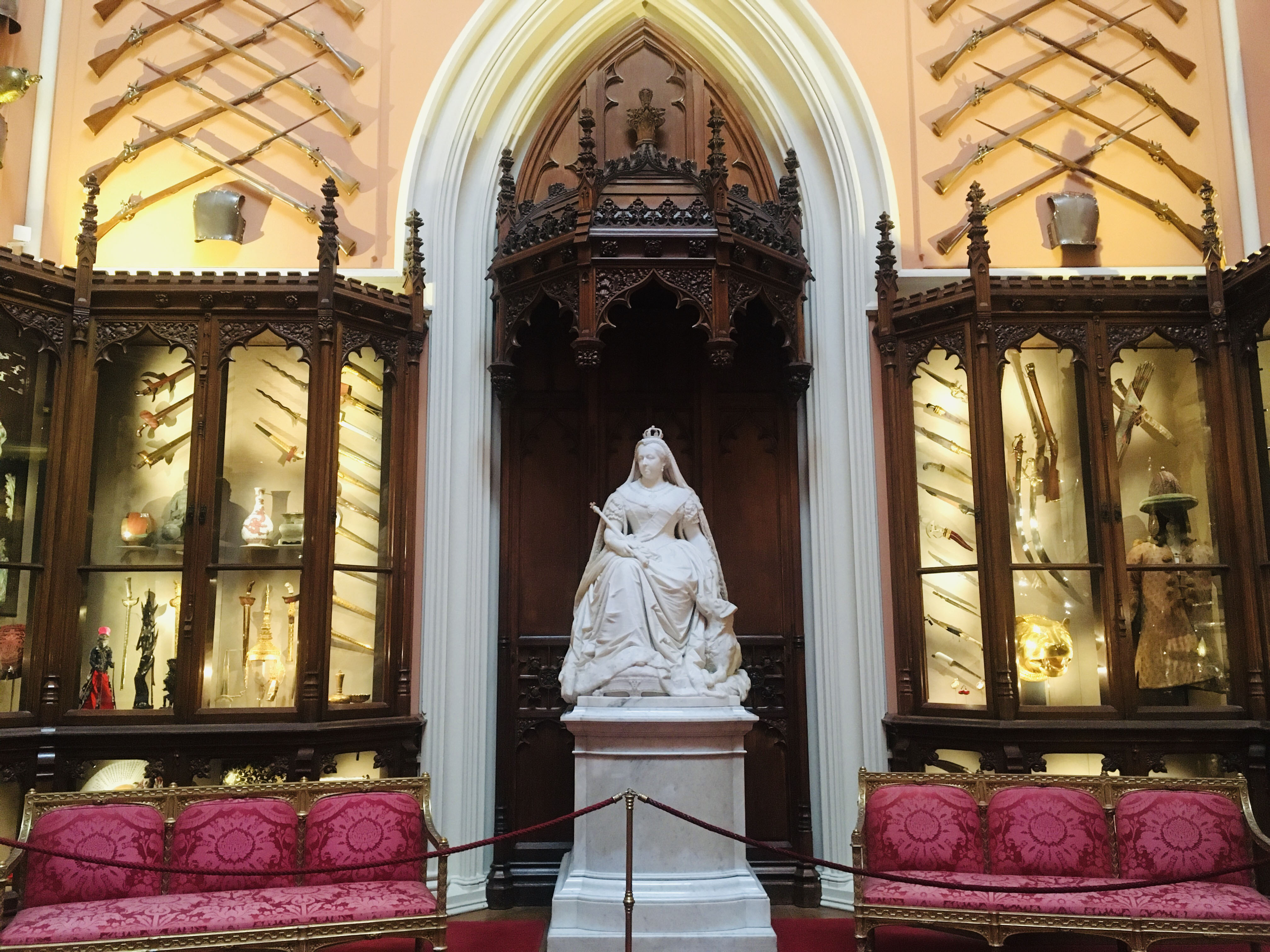
Grand Vestibule: The British Monarchy and the World
The Grand Vestibule at Windsor Castle reflects interaction between the monarchy and the wider world
Trophy head
nineteenth centuryRCIN 62901
Asante trophy heads of this kind represented defeated enemies and were attached by a hoop to ceremonial swords in the state regalia. They were made using the lost-wax technique, for which the Asante were renowned. The mask was modelled in wax and then encased in clay; when dry, the clay was heated until the wax within melted and ran off, usually through a hole at the base. The resulting cavity was filled with molten metal and, once cool, the clay exterior broken off. Producing such thin and finely worked masks such as this demanded the careful labour of the most sophisticated craftsmen. Here, narrow strips of gold on the forehead and cheeks emulate scarification.
This trophy head belonged to King Kofi Karikari of Asante (c.1837–1884). It was one of seven gold masks seized from his palace at Kumasi by British troops during the Anglo- Asante War of 1873–74. Some of the spoils were bought by the London dealers Garrard & Co. and then sold by them in the spring of 1874. This head was either bought directly for the Royal Collection at that sale, or later presented.







